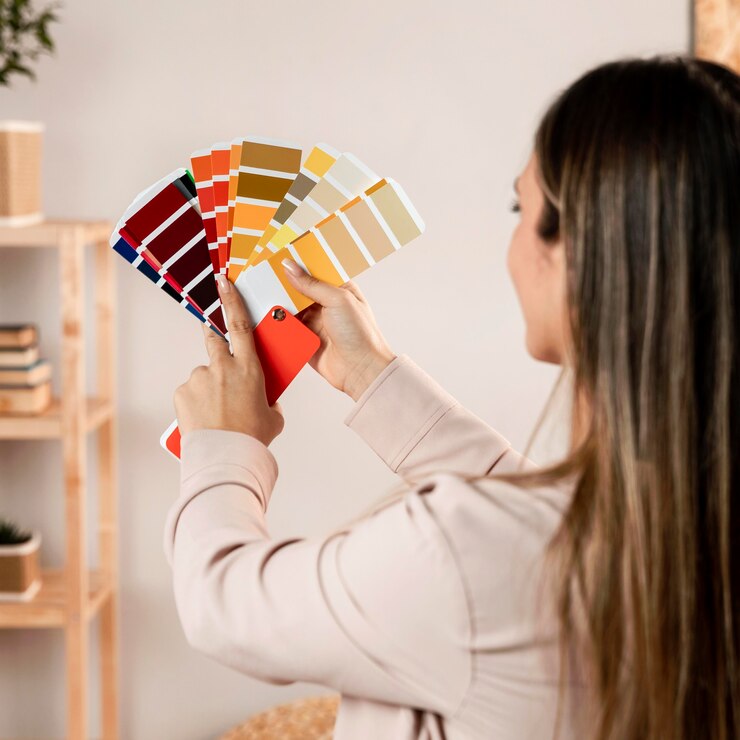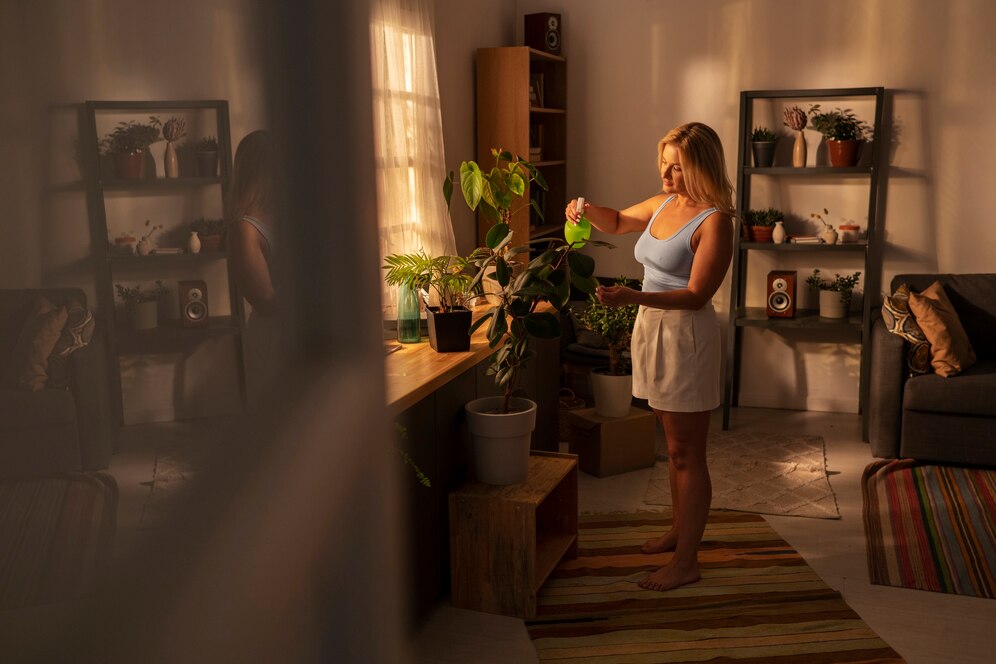Choose the Perfect Color Palette for Your Home

Selecting the perfect color palette for your home is an essential step in creating a space that feels harmonious, inviting, and reflective of your personality. Colors can transform the look and mood of any room, making it crucial to choose wisely. This guide will help you navigate through the process of finding the ideal palette to enhance your living spaces.
1. Why the Perfect Color Palette for Your Home Matters

The color palette you choose sets the foundation for your home’s overall aesthetic. Colors influence mood, energy, and even perceptions of space. For instance, warm tones like red and orange can make a room feel lively, while cool tones like blue and green offer a serene and calming effect. Understanding the importance of a cohesive color palette ensures you create a visually pleasing and functional environment.
2. Define Your Home’s Purpose Before Choosing Colors

Each room in your home serves a unique purpose, which should guide your color choices. Here’s how to align the perfect color palette for your home with the function of each space:
- Living Room: Use neutral bases with warm accents to foster an inviting environment.
- Bedroom: Opt for calming hues like pastel blues or soft greens.
- Kitchen: Bright and energetic colors like yellow or white work best here.
- Bathroom: Choose light, spa-inspired colors such as aqua or beige.
By matching colors to a room’s function, you set the stage for a home that feels cohesive and comfortable.
3. Incorporate the Perfect Color Palette into Subtle Transitions
To maintain flow throughout your home, it’s vital to ensure a smooth transition between rooms. A neutral color palette like beige, gray, or off-white can act as a bridge between bolder colors in adjacent spaces. This approach prevents rooms from feeling disjointed while enhancing the overall aesthetic of your home.
Lighting significantly impacts how the perfect color palette for your home will look. Natural light enhances vibrant tones, while artificial light can make certain colors appear warmer or cooler. When choosing colors, consider the room’s lighting conditions:
- Rooms with abundant natural light can handle deeper shades.
- Dimly lit rooms benefit from lighter tones to create an airy feel.
Testing paint samples under different lighting will help ensure your chosen palette suits the space at all times.
5. Build a Foundation with Neutral Colors

Neutral tones are the backbone of the perfect color palette for your home. They provide flexibility and allow you to experiment with accents and accessories. Classic shades like ivory, taupe, or soft gray offer timeless appeal and pair effortlessly with bolder colors.
Examples of Neutral and Bold Pairings:
- Gray walls with yellow cushions.
- Beige base with navy or emerald green accents.
These combinations balance simplicity with pops of visual interest.
6. Make Accent Colors Pop

An essential part of the perfect color palette for your home is the use of accent colors. These bold hues inject personality and energy into a room without overwhelming it. Think vibrant throw pillows, rugs, or artwork to introduce shades like:
- Deep red for drama.
- Mustard yellow for warmth.
- Teal for a refreshing touch.
Accent colors should complement your primary palette and draw attention to key elements in your design.
7. Optimize Your Color Palette with Psychology
Color psychology can help you choose the perfect color palette for your home by focusing on the emotional effects of different hues:
- Blue: Creates calm and trust, ideal for bedrooms.
- Yellow: Evokes happiness, great for kitchens or playrooms.
- Green: Represents harmony, fitting for living rooms.
- Gray: Adds sophistication to offices or modern spaces.
Consider how these colors influence mood and energy to tailor your palette to your lifestyle.
8. Bold Choices for the Perfect Color Palette
If you’re drawn to bold and unique combinations, embrace them! A striking color palette can make your home stand out. Here are a few pairing ideas:
- Navy blue and gold for an opulent look.
- Soft pink with beige for a romantic touch.
- Emerald green and white for a refreshing feel.
Bold colors, when used thoughtfully, can add depth and character to any room.
9. Test the Colors Before You Commit
Before finalizing your perfect color palette for your home, test the options in small patches on your walls. This allows you to see how they interact with your furniture, lighting, and decor. Pay attention to:
- Daylight vs. artificial light reactions.
- How different colors look together in one room.
Testing colors ensures there are no surprises once the full palette is applied.
10. Keep a Balance Between Trends and Timelessness
Trendy colors can make your home feel modern, but timeless shades ensure longevity. Strike a balance by using trendy hues for accents while sticking to classic colors for larger elements like walls or furniture. This way, your color palette remains fresh and adaptable.
Conclusion: Designing Your Perfect Color Palette for Your Home
Creating the perfect color palette for your home doesn’t have to be overwhelming. By considering the function of each room, factoring in lighting, and using color psychology, you can craft a harmonious design that suits your style and preferences. Don’t forget to test your choices and aim for a balance between timeless elegance and modern flair.
With these tips, you’ll confidently design a home that is not only visually stunning but also feels uniquely yours.

